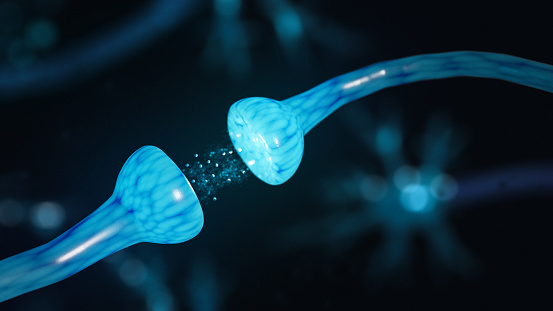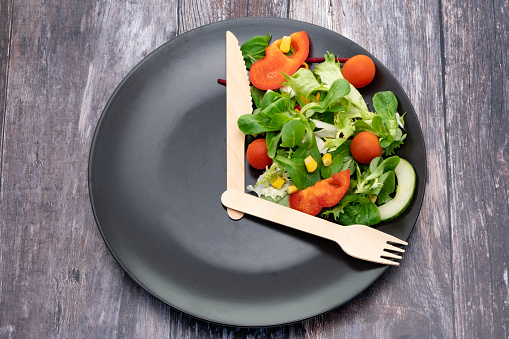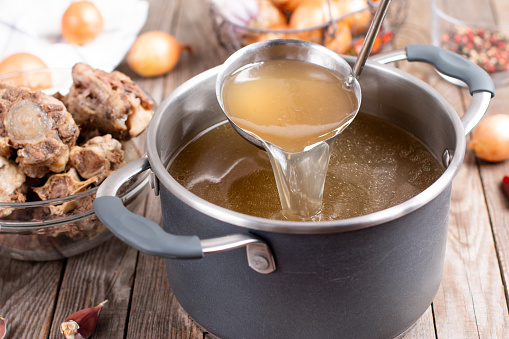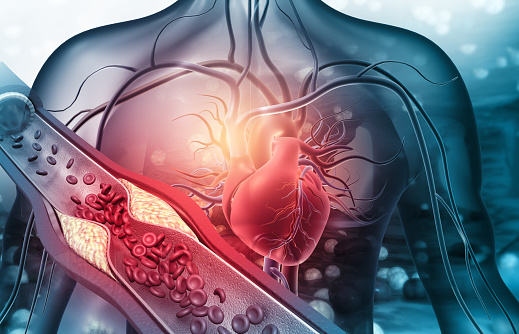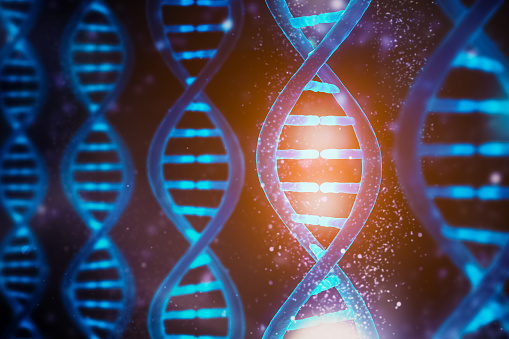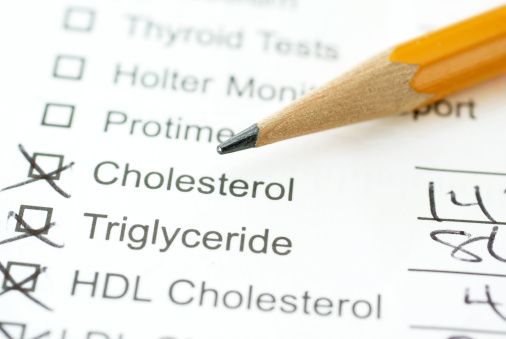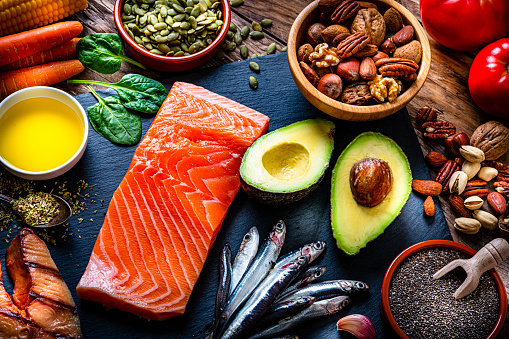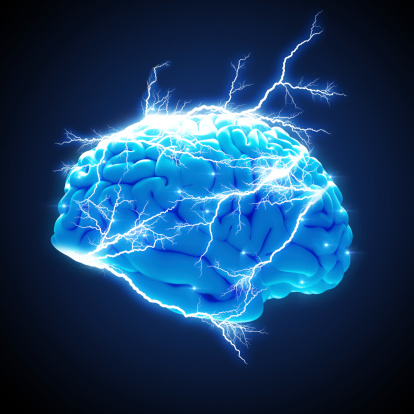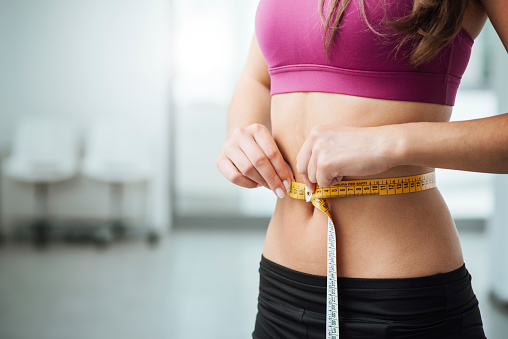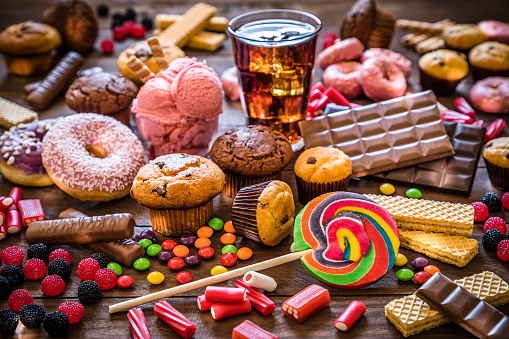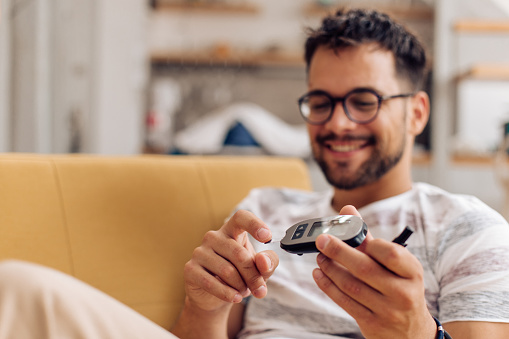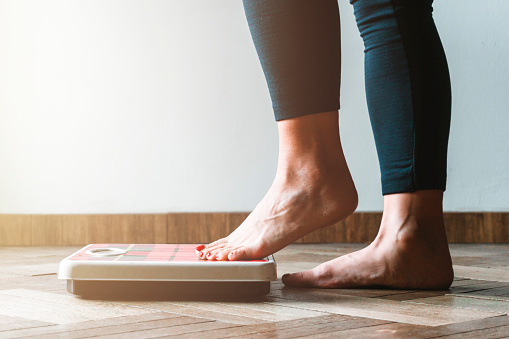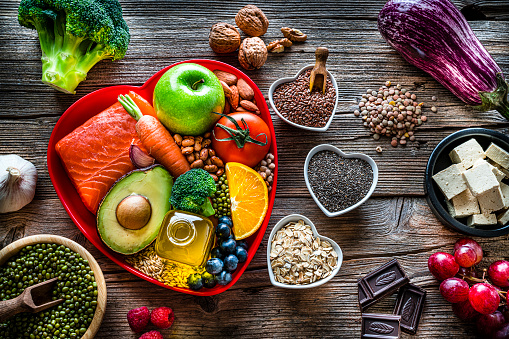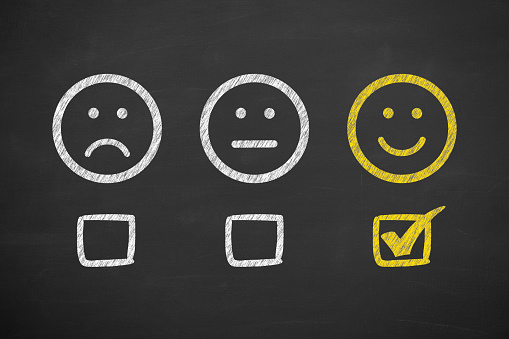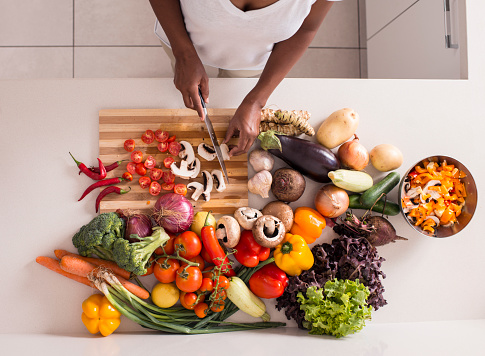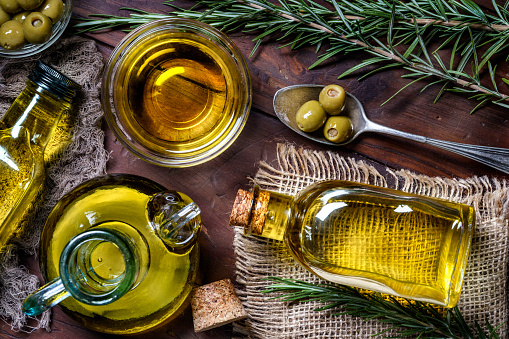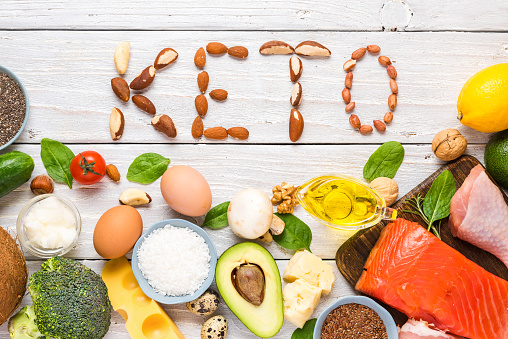Sign up now to get an extra bottle in your first box
“Looking at it under a microscope, natural wine looks like a small universe.” - Gilles Verge, natural wine grower in Burgundy.
One of the beautiful things about natural wine is that it’s alive. It’s full of native yeasts and beneficial bacteria.
From a taste perspective, that means each bottle of natural wine is a unique experience. Leave the same bottle open on your counter overnight and you’ll wake up to a whole new wine.
But the beauty of living wine goes beyond taste. All those yeasts, bacteria, and colorful compounds that make Natural Wine delicious also help you live a healthier life. The secret lies in your gut bacteria.
Right now, as you’re reading this, trillions of bacteria are thriving in your gut. These little companions outnumber your own cells - you’re actually more bacteria than you are human. Feeding the good bacteria in your gut can give you some glorious health benefits: staying lean, feeling happy, and even being more social.
For example...
- Mycobacterium vaccae, a bacterium that’s naturally in the soil around you, significantly increased happiness in lung cancer patients who took it as a probiotic.
- A diverse gut biome can boost tryptophan. Tryptophan turns into serotonin, the same brain chemical antidepressants enhance. No surprise that a balanced gut can reverse depression and anxiety.
- Diverse gut bacteria can also increase your metabolism, and even affect social skills.
Your gut bacteria can help you look and feel more vibrant.
That begs the questions: how can Natural Wine and gut health work together?, Can you enjoy the decadence of Natural Wine while maintaining a healthy lifestyle?
How do Natural Wine and Gut Health Overlap?
Both Natural Wine and our guts are alive, which means they’re rich with precious bacteria and compounds that enhance your microbiome.
Polyphenols, the antioxidants that give red wine its passionate color, feed good gut bacteria like Enterococcus, Prevotella, Bacteroides, and Bifidobacterium. Polyphenols also remove harmful gut bacteria to make room for the new ones to grow. Two superb sources of polyphenols in your diet are red wine and coffee.
Flavanols and wine aroma compounds protect brain cells from dying in people who drink moderate red wine daily and ward off Alzheimer’s Disease in mice. The key is that the wine passes through the gut, where your bacteria break the flavanols down into compounds that keep your brain healthy.
Resveratrol, an antioxidant found in grape skins, makes mice leaner by fostering a balanced gut. You may have heard of resveratrol; it gets a lot of attention in the news, but the reality is that most red wines have nearly undetectable amounts of it. The wines that do have plentiful resveratrol are Malbec, Pinot Noir, Petite Syrah, and St. Laurent. Drink them to get your resveratrol fix.
Saccharomyces cerevisiae is a wild yeast that gives wine a spicy, fruity flavor. It’s good for more than mouthwatering taste: S. cerevisiae also increases absorption of zinc, magnesium, calcium, and iron through your intestinal wall and decreases stomach pain in people with irritable bowel syndrome (IBS). Commercial wine is sterilized to get rid of the majority of native yeast, but you’ll find an abundance of S. cerevisiae in natural wine.
Probiotic bacteria also form in wine while it ferments. Commercial wines are filtered to get rid of nearly all bacteria and sediment. Natural wine keeps those beneficial bacteria in. Among them is Pediococcus pentosaceus, a bacterium that attaches to your intestinal wall and protects it from pathogens like E. coli. Wine also contains lactic acid bacteria that have similar probiotic benefits as fermented foods like kimchi and miso, and unique wine probiotics that decrease gut inflammation in mice.
Anthocyanins in red wine are prebiotics that support a balanced gut biome by helping good gut bacteria take over bad gut bacteria.
Considerations When Thinking About Natural Wine and Gut Health?
A regular bottle of wine can damage the delicate microbiome within, although the harmful compounds are either far lower or entirely absent in Natural Wine.
Sugar can feed the harmful yeast Candida and other pathogens in your gut. Sugar hurts gut bacterial balance and decreases brain function in mice, too. Fortunately, all our wines are sugar-free because they’re left to fully ferment. The result is crisp wine that won’t cause bloating or dull your thinking the next day.
Alcohol is a toxin for your gut too. It increases gut permeability (leaky gut), which can cause gut inflammation. That’s one reason why every bottle from Dry Farm Wines is low-alcohol (<12.5% ABV). The high amount of anti-inflammatory polyphenols in natural wine may also counter the effects of alcohol.
Acetaldehyde is a fermentation byproduct that increases intestinal permeability and makes you feel hungover. During the final steps of fermentation, though, yeasts use up acetaldehyde as fuel, and bacteria break it down. We make sure the natural wines we stock have far less acetaldehyde because they’re unfiltered and ferment without human intervention. Low acetaldehyde is part of what keeps Dry Farm Wines hangover-free.
How to get the healthiest wine for your gut bacteria
The short answer is to get real wine, grown in accordance with nature.
Organic grapes. Grapes grown organically (without pesticides) have more polyphenols and antioxidants than conventional grapes do. Grapevines produce antioxidants as a natural way to protect against microbes and pests. Organic vines aren’t artificially protected by chemical sprays, which means they produce many more antioxidants to survive.
Natural Wines. Commercial processing techniques like extreme filtration damage or remove many of the good compounds in wine. Manufacturers often replace them with artificial coloring and lab-created yeast strains.
Low sulfites. Sulfites kill bacteria to stabilize a wine. The lower the sulfites, the more alive a wine remains. You can see the difference under a microscope - low-sulfite wine is vibrant with a diverse spectrum of wild bacteria and yeast.
Sugar-free, low-alcohol wine. Sugar and alcohol are the two biggest toxins in wine. That’s why all our wines are lab-tested to be sugar-free and low-alcohol (below 12.5% alcohol by volume).
By drinking moderate amounts of sugar-free, low-alcohol Natural Wine, you’ll help keep the companions in your gut healthy and happy, and in turn, they’ll take good care of you. You can enjoy the pleasure of artisanal wine while supporting a strong body and a sound mind.
Ready to try pure, handcrafted Natural Wine?
THE DRY FARM WINES PROMISE
Every bottle of Dry Farm Wines Wines must taste delicious. After all, even if a wine is grown to the highest natural standards, it needs to taste good to enjoy it. These wines undergo a meticulous tasting protocol by our wine team. They taste for purity, honesty, sense of place, and dynamic spirit. As a result, their Natural Wines are vibrant and elegant.
Not only are Dry Farm Wines naturally delicious, but they are also:
- Sugar Free
- Lower Alcohol
- Lower Sulfites
- Organically Farmed
- Contain No Industrial Additives
It is time to become a wine club member! Join a community of wine enthusiasts at Dry Farm Wines today by checking out our membership box. Use this link for a special offer of an extra bottle in your first box for just a penny!
Head to dryfarmwines.com/ketokamp to collect your extra bottle
Sign up now to get an extra bottle in your first box
Turns out, that wasn’t the problem, it’s what he was drinking.
“I thought I was drinking too much,” says Todd White, Founder of Dry Farm Wines, now the world’s largest Natural Wine company.
In 2015, White started thinking about how drinking and wine fit into his progressive anti-aging lifestyle. A lifelong wine lover, White was also very careful about what he put in his body. He was practicing (and still is) a low carb, sugar free ketogenic diet, intermittent and extended fasting, daily meditation, Wim Hoff breathing, cold/heat therapies, and a methodical fitness schedule.
At age 61, White had been a frequent wine drinker for decades, enjoying a few glasses of wine with dinner every night.
However, White would regularly experience sleep interruption and wake up with something most have experienced: a wine hangover. In fact, it’s probably quite common in the US. Americans drink more wine than any other country in the world, around 3 gallons per resident per year.
“Let’s be very clear, alcohol can be a dangerous neurotoxin,” says White, “but I didn’t want to stop drinking wine. I love the taste of wine, and the fun, social community around food and wine.”
Nevertheless, he came to believe lowering alcohol consumption was a key to optimizing his relationship with wine. He began practicing what he calls “conscious consumption,” a more mindful approach to drinking. Since he did not want to give up his daily wine rituals, lowering the amount of alcohol in the wine naturally became the one of key objectives.
A friend recommended he try low alcohol Natural Wines. “I had no idea what Natural Wines were,” White says. As it turns out, he was about to make a discovery much larger than just how to optimize wine consumption
What is a Natural Wine?
Today, Natural Wines are a trendy topic. They now commonly appear on wine lists in cities like in NYC, Los Angeles and San Francisco. But 5 years ago, they were virtually unknown.
Intrigued, White dove headfirst into research: what was Natural Wine exactly, and how was it different from other wines?
What he found shocked him. The modern wine industry is much like the modern food industry. Industrialization has turned most wine in the world into a factory product that contains far more than just grapes.
There are 76 additives approved by the FDA for the use in winemaking, including toxins like dimethyl dicarbonate. Many of the most popular wines are full of additives and high in sugar, with alcohol levels that have continued to increase over the last few decades.
As someone who watches carefully for additives in anything he consumes, White was shocked that he hadn’t known about this. Why are these additives such a secret? Because wine producers are not required to disclose contents or nutritional information on the label. This is no accident. The wine industry has successfully lobbied in Washington to keep contents labeling off wine bottles. Simply put, the wine industry doesn't want you to know what is in the bottle.
The Dry Farm Wines Difference
White wanted to take things a step further. Not only did he want to be drinking additive free pure Natural Wine, he also wanted to ensure that the wine he was drinking was lower in alcohol and completely free from residual sugar to pair with his lifestyle and goals. He began sending bottles off to a lab to test his wine for alcohol and sugar content.
When he switched to drinking these lower alcohol, sugar free Natural Wines, White immediately noticed a difference. “It tasted more refreshing and I felt a different experience. My body was telling me I had found a better way to enjoy wine.” These wines were lighter, more food friendly, and very rare. He estimates less than 0.01% of the world’s wine production meets his high standard for pure Natural Wine.
White then created the most strict certification for Natural Wines in the world. The Dry Farm Wines Certification process finds only the best of the best. The wines must be organically grown without irrigation, fermented with wild native yeasts, made without toxic additives, sugar free, lower in alcohol, and delicious. Each wine is independently lab tested for purity, and then evaluated by a team of wine taste experts.
Today, White is on a crusade to educate more people about what's in their wine. He wants to empower people to make better decisions about what they put in their body and how they impact the health of the planet.
Start experiencing low alcohol pure Natural Wine
This article appeared on partners.wsj.com on May 23, 2022.
Sources
- 3 gallons per year:
- US drinks more than any other country:
- FDA
- Dimethyl dicarbonate
The ketogenic diet can be a powerful way to lose some extra body fat. A lot of people are confused thinking “how is eating fat going to help me lose fat?” Well, we're gonna debunk that myth and then I'm going to give you three ways to practice keto the right way for weight loss and fat loss. I'm also going to show you how to do it the wrong way which can actually lead to weight gain. So let's get all into it.
Hey, Keto Kamper, Ben Azadi, here best selling author of four books, the founder of Keto Kamp, and here at keto camp we’re on a mission to educate and to inspire 1 billion people.
In this 10 part keto series we have documented how to do keto the right way, the right foods to eat, what are the right markers for ketosis, and so much more. This article is focusing on weight loss with keto. I'm going to outline for you three ways to burn fat and keep it off for good when you follow these three steps.
So without further ado, let's get right into this. First thing we need to understand is that we don't lose weight to get healthy. This is where a lot of educators and doctors and nutritionists get it wrong. The fact is, we get healthy to lose weight. I'm gonna say that again, so I really hope you understand this, as Dr. Berg says all the time and you know what, he's right. We don't lose weight to get healthy. We get healthy to lose weight.
So the question is, how do we get healthy? How do we use ketosis to get healthy? Well, it starts at the cellular level. Inside the body, we have 70 to 100 trillion cells. Inside each cell there is a DNA nucleus, yes, the genes you were born with that you cannot change, but you can change the expression of those genes. We have our little mitochondria, which is the engine of your cells, if you will, that produce ATP. Now, I’m going to relate this to fat loss.
We have at least eight fat burning hormones that we know of. I want to list three right here which is the thyroid, T3, the active form of thyroid, every cell has a receptor for the thyroid hormone, testosterone, human growth hormone, and other fat burning hormones.
But here's how weight loss works. Here's how your hormones which is the language of the human body works inside your body. Every cell has a lipid bilayer which is called the cell membrane. It's made up of, guess what, protein, saturated fat and cholesterol. Yes, you are made of fat. Your body loves fat, the right fat which we'll talk about later. Not carbohydrates.
In fact, less than 1% of the total body is made up of carbohydrates. So, on your cell membrane are your cell receptor sites. There can be around 30,000 of these receptor sites on one cell. Think of them as cell phone antennas, that are just receiving signals. What are they receiving signals from? From your hormones, your nutrients, your oxygen.
Now, relating this to your fat burning hormone, when you are in ketosis, doing it the right way, the way that I'm going to teach you here, your fat burning hormones send signals to your cells. The message is being heard, the mitochondria burns fat, you lose weight as a side effect and you produce energy so you feel good and you have high energy levels. That's the way you were designed to be. When you are not functioning this way. There is one reason for it and there's one word for it and that word is inflammation.
I know you've heard of inflammation from a sore shoulder from a CrossFit workout or a sprained ankle from basketball, that is inflammation, but what I'm referring to is cell membrane inflammation. When there's cell membrane inflammation, guess what? Now, your fat burning hormones cannot get into your cells and you're not going to feel well, you're not going to burn fat. So what we want to do is we want to use keto. I'm going to teach you three ways to use keto to down-regulate cell membrane inflammation and as a side effect, lose weight and you have more energy as a side effect. You get the results you want and guess what? They stick around. long term.
This is not yo yo weight loss, fad dieting here, this is true cellular health. Therefore stop focusing on weight loss and start focusing on cell membrane inflammation. And hey, when it comes to hormones, there's only one fat storage hormone in the body and that is insulin.
Here's a simple rule for you to understand - high insulin, fat storage, low insulin fat burning. So which foods cause the most insulin and glucose spike in the body? Carbohydrates and eating frequently. A ketogenic diet of rich in healthy fats barely touches the dial on insulin.
Insulin is the bully of the block. When you activate insulin, all of a sudden your fat burning hormones, they've scattered they're gone. They cannot coexist. Insulin is that bully and you activate it with carbohydrates. Therefore when you eat fat like you do on keto, you're keeping insulin low and you're in a fat burning state. Think of it this way. When you eat carbohydrates, your body raises glucose inside your body. It's a very tightly regulated system that wants to keep glucose low in the bloodstream, about one to two teaspoons in the body is considered normal. And when you eat carbohydrates, you have more than that. So the body calls the insulin troops to take the glucose out of the bloodstream, put it into your cells and store fat.
When you're eating keto. You don't have this problem. You're keeping insulin low and you're burning your own body fat and producing ketones. That's what we want to do here and that's what you're going to achieve. So let's get into these three ways to use keto the right way. So you could burn fat on keto, and keep it off for good.
Number one way is to understand clean keto versus dirty keto. Not all fats are created equal. You could be eating ketogenic fats, they might get you in ketosis, yet they're eliciting a strong inflammatory response. Remember, I showed you the cells and the inflammation around your cells. This can happen with bad unstable rancid fats on keto and a lot of people who do keto eat these fats, not knowing that they're creating a lot of inflammation in their body and they're wondering why they're not getting the results they want, on keto.
So what are these bad fats? It's the vegetable oils. It's the canola oil, corn oil, the grapeseed oil, the cottonseed oil, the soybean oils. Stay away from these vegetable oils. There was a study that showed these vegetable oils create 132 days of cell membrane inflammation. I've interviewed Dr. Kate Shanahan and Professor Peskin from MIT. And they all say that these vegetable oils are worse than smoking cigarettes. They create massive amounts of inflammation in your body, so let's stay away from that.
We also have things like the artificial sweeteners like sucralose and aspartame, which could create gut dysbiosis. Stay away from that on keto and stay away from the trans fats, the margarines. Those are bad fats. You want to get rid of them from your ketogenic diet and switch over to clean keto foods. Stable fats that help your cell membrane and allow these hormones to attach and burn fat - from sources like grass fed beef, grass fed lamb, pastured eggs, organic free range chicken, bison, nuts and seeds.
I have videos on my channel with lists and lists of healthy keto foods. But this is just a small sample for you to understand that healthy fats clean keto is key. Let's not be one of those keto bros that goes to McDonald's and grabs the Big Mac, asks for it without the bun and say hashtag we're keto. No, that might be keto, but that is not healthy. And that's not what we teach here at Keto Kamp.
The second tip for you to accelerate fat loss with keto is to add intermittent fasting to your ketogenic diet. Intermittent fasting and ketosis go hand in hand because they both do a great job at keeping insulin low. The way I teach it inside of the Keto camp Academy is to get fat adapted first with keto, get into ketosis, and then pair intermittent fasting.
Here's the analogy that I got from my colleague, Dr. Jason Fung. When you are eating carbohydrates and eating foods that stimulate glucose in the bloodstream, you're storing that as sugar reserves called glycogen stores. We could store about 2000 calories of these sugar reserves. So think of them as just strings of sugars, that your body's stores and packs away in your muscle and liver cells.
You can also think of it as the wallet in your pocket, which is very easy to get cash in and out of - that’s equivalent to your glycogen reserves. Very easy to put sugar in and take sugar out, very easy access, that's the benefit. The drawback is that there are limited reserves in your wallet, you can only put so much cash before it's packed, and then you need more wallets. Well, the body can only store about 2000 calories of the sugar reserves. And then you store body fat in excess. Not good.
So with adding fasting into the mix, you teach your body to start burning its own body fat stores. You teach the body to switch over and burn through that wallet, if you will, burn through your glycogen stores and start burning your own body fat. So I compare body fat your body fat stores on your body right now to the bank safe you have down the street. It's a longer process to get to that bank, but once you have access to the bank safe, there's almost unlimited reserves there and you could go days and - somebody has fasted over a year by the way, just burning your own body fat.
So we have an option here doing keto, we can get our keto calories from the plate of food in front of us, or we could get it from our butt our hips and our thighs, you choose.
So here's a great intermittent fasting schedule for you to follow on keto to get amazing fat loss results. It's called the 18-6 schedule. This is great for you to do on a daily basis and how it works is 18 hours out of the day, you are in a fasted state. You're just having some water, some sea salt, you're letting your body get its own calories from your body fat. Your liver is producing ketones and you're feeling good. You should feel like a rockstar if you've done this the right way. So your body's burning body fat throughout those 18 hours. Then six hours out of the day you have your eating window. Let's call it a feasting window, feast it up with ketogenic rich meals. Have two meals within those six hours. For example, 12pm you break you're fast and then you finish your second meal at 6pm. So 12 to 6pm eating window and then outside of that fasting window. If you follow that 18-6 schedule with your ketogenic approach, watch the fat just melt off.
Before I get into the third and final tip here. I have a quick question for you which is the question of the day. Do you currently practice intermittent fasting with your ketogenic lifestyle? And if you do, what is your go to schedule? Put a comment down below and let me know.
The third tip here is this when you break your fast break it the right way. We do not want to break our intermittent fast by combining carbohydrates and fat even if it's some carbs and fat because here's what happens when you break your fast. Your hormones are very sensitive. Insulin is very sensitive. This is good. We want sensitive hormones, but when you break the fast with some carbohydrates, you're going to spike glucose your body will do a great job at grabbing the glucose out of the bloodstream and taking it to your cells, unlocking the cell doors and driving the glucose into your cells.
Amazing. However, when you have fat with that carb meal, the fat goes along for the ride and it can actually slow down fat burning and maybe even cause weight gain. So don't break your fast with the combination of fat and carbs. Instead break your fast the right way and that's going to be with mostly protein and some fat. What would be an example of that? Well, I love bone broth, I personally don't make my own bone broth but hey, if you do, more power to you. Make your own bone broth. Not only is bone broth loaded and things like collagen and specific amino acids which really helped the body but it's also mostly protein and some fat which is the ideal meal for breaking your fast
My go-to for bone broth is with my friends over at Kettle & Fire. Click here to purchase their bone broth; we have an exclusive 15% off code with Kettle & Fire or you, use Keto Kamp at check out.
Another option for you to break your fast the right way is going to be with some eggs and some avocados and maybe some green leafy vegetables. That's mostly fat, mostly protein too, thumbs up. One more example, for you to break your fast the right way, it's going to be a fatty keto smoothie with some coconut milk, some collagen protein powder, some nut butters in there and maybe some ice blended all together. That's also a great way to break your fast. When you break your fast that way you're going to continue your fat loss efforts.
So those are your three tips for you to get amazing weight loss results on keto. Now what if you're doing all these things but you've hit a thought you hit a plateau? It turns out there's five reasons why I have seen people hit a Keto plateau and I have outlined all five of them. In the next article, and then five solutions for you to overcome that keto stall. So click that article right here and learn the five ways for overcoming a Keto plateau.
If you'd like to see the video version of this article, click the play button below.
Does following a low carb high fat diet like the ketogenic diet, cause your cholesterol to go up, and if it does, is that a bad thing? In this article we're going to assess the benefits and the risks from eating saturated fat and cholesterol on your keto diet. And we're going to review the specific lab markers to request from your doctor to know whether or not keto is working for you.
Hey, Keto Kamper, Ben Azadi here, best selling author of four books & founder of Keto Kamp where our mission is to educate and to inspire 1 billion people.
Previously, in our ten-part series we've covered the very important details around the history of Keto and nuances that define clean keto foods & dirty keto foods, how to deal with common symptoms of keto - like the Keto flu, brain fog & fatigue, the specifics around the macros and calories on keto and the five signs to look for to know if you’re in ketosis & fat adapted and more. So if you haven’t already caught up on the previous articles, I highly recommend it.
Here we're going to talk about cholesterol. There are so many myths regarding cholesterol and saturated fat and we're going to debunk a lot of these myths.
Before we do, I have a question for you, the question of the day. Has your doctor told you that you have high cholesterol and has your doctor recommended something like a statin? Let me know by commenting in the section below.
A very common question I get is, “will my cholesterol go up on a ketogenic diet?” My response is, maybe, but is it a bad thing if it does? Why does cholesterol have such a bad rap, why does it have such a poor PR team?
I recommend reading Nina Ty Schultz book called "The Big Fat Surprise”, if you want to learn more about the history of cholesterol, why it has such negative publicity and how the work of Ancel Keys led to, among other things, the creation of the World War II ‘K-Ration’. Ancel Keys was the author of what is know as the “Seven Country Study”, which deliberately excluded research from 16 countries that did not support the narrative of his theory. He's one of the main influencers in the popularization of trans fats, margarine, low fat and fat free.
Well, here’s the deal on how Ancel Keys faked it. He concluded, with a portion of his research, that six countries had high amounts of heart attacks due to the high amount of cholesterol they consumed. But, they were consuming rancid fats. He also didn't share that he surveyed a total of 22 countries, and that the majority of the findings did not support his conclusion, conveniently excluded the data, essentially fooling the world in the process. And we're still dealing with his false data.
The reason Ancel Keys and a lot of people say cholesterol is bad, is a result of autopsies done on heart attack victims in which these heart attack victims show a lot of cholesterol build up in the arteries. Therefore, concluding, that the cholesterol is what caused the damage. Is that true? Well, I don't think it is. In fact, I know that it's not because that's like saying “Every time we see a building is on fire, we also see firefighters there, that must mean the fire fighters are the cause of fires in buildings!” We know that’s not true. Firefighters are there to protect and help with the fire (inflammation) - to put out the fire, firefighters are healing, they’re a bandaid - the firefighters are helping with the problem which is the fire (inflammation).
So when we see think of cholesterol, we have to remember that cholesterol is a band aid, cholesterol is a healer. There are many, many important reasons why we love cholesterol in the body.
A study reported in Science News showed that, in most heart attack patients, their cholesterol level did not correlate with heart attack or cardiac risk. A separate study in Harvard showed that more people die from heart disease with normal to low cholesterol, than with high cholesterol. If you’re like me, you’re probably wondering “What!? How is that even true? Why isn’t the media talking about this? Why isn’t my doctor talking about this?”
We know there are four main purposes cholesterol serves in the body. I'm going to break them down for you right now.
#1. The fact is that cholesterol is a building block of your hormones. Look, if you want to burn fat, feel good, have healthy hormones then eat quality cholesterol and non rancid fats, which I'll talk more about a little bit later. Your brain is mostly fat! Cholesterol, LDL cholesterol makes your sex hormones, cell membranes are also made of protein saturated fat and cholesterol. We have over 600 hormones in the body. Hormones are simply chemical messengers sending signals to your cells, docking on their receptor sites, also knowns as, integral membrane proteins. When functioning properly, the message goes into your cells, your cells produce energy, your mitochondria burns fat, and you feel good. So if you deprive your body of cholesterol, this process will not work efficiently.
#2. As I mentioned, your cell membrane is made up of cholesterol, protein and saturated fat. The cell membrane is the key to health. Dr. Daniel Pompa, my coach and mentor says it all the time, “life begins and life ends at the cell membrane”. The cell membrane is a lipid bilayer around each of your 70 trillion cells that protects your cells. It is the body guard of your cells. It allows good things in and it allows bad things out. It tells your genes to turn on good genes and it tells your genes to turn off bad genes.
That's correct. You could control your genetics. You cannot change your genes but you can control whether or not you want to turn on or turn off genes. So think of genes as a light switch to turn on and turn off. What communicates to your DNA nucleus is, the cell membrane.
So when you eat quality fats and give your cell membranes the appropriate building blocks, this process works the way it is designed to work, the way that God created us. Your brain is also made up of cholesterol as well as your nervous system. We know that at least 60% of the brain is fat, so when somebody says “hey, fat head!”, say “thank you so much, I know I'm very smart and I’m designed this way.” haha!
Fat is important for your brain to function. Think about this, breast milk is made up of saturated fat and cholesterol, because it helps the development of the brain. Breastfed babies go in and out of ketosis, because breast milk is mostly saturated fat and cholesterol.
#3. Cholesterol helps make bile and vitamin D. Why is bile important? Well, when you’re eating fats on keto, which should be quality fats, bile is what helps break down the fat, like a detergent, it helps break down the fat and assimilate those fat soluble vitamins. Vitamins, A, D, E and K. By the way, the number one reason people feel like crap on keto is they can’t make healthy bile, well, cholesterol helps you make healthy bile. Bile also helps eliminate toxins and cholesterol also helps your body synthesize and create vitamin D, which impacts your blood pressure, immune system, mood, brain function, the ability to protect against certain cancers and your skeletal structure. Vitamin D is actually a precursor to a particular type of steroid hormone within the body. We should not be afraid of cholesterol.
So how do you test for cholesterol?
When it comes to measuring your cholesterol, it's important to understand, cholesterol cannot freely move through the body, it needs to be carried in a vehicle, a particle. These particles are called LDL particles. Now, LDL has been coined ‘the bad cholesterol' but that's not necessarily true. Nothing in the body is black and white. It’s very important to understand that our bodies are very complex. Yes, it’s important to get your LDL measurements done but the particles are what's really important when assessing your risk of heart disease.
When your doctor measures your LDL and says, you have high LDL, therefore we need put you on a statin. What your doctor is measuring is the amount of cholesterol within an LDL particle.
Your doctor is going to say you have high LDL. If you have low cholesterol within a certain particle, your doctor is gonna say you have low LDL, but this is not important.
Imagine a vehicle two passengers stuck in a traffic jam on the highway. What's more important in that traffic jam, the number of people inside the vehicle, (the number of cholesterol inside of the particle) or the number of cars on the road. Of course, the number of people within the vehicle is irrelevant to the traffic jam. What's more important is the number of cars on the road.
Same thing goes for your cholesterol LDL particles, the total amount of LDL is irrelevant.
We want to know how many particles are on the road. Because just like this analogy, the more vehicles on the road on the highway, the more oxidative stress from the car fumes, the more accidents that will occur, the more damage that is done. Same thing with your LDL particles if you have too many particles, especially the small and sticky ones that are going to break down, it can cause inflammation in your arterial wall leading to heart disease.
So it's important to measure your LDL particles which are split into two different categories - large and fluffy LDL, and small & sticky particles.
If you have a ton of large and fluffy LDL particles in your artery, these are actually good particles that could actually help clear up plaque as they go through the arteries, they're not a problem. But if you have a lot of small and sticky particles, those get lodged into the arterial wall that can lead to problems, especially if you also have inflammation present with those small and sticky particles, because the inflammation will drive those small particles to your arterial wall as a way to kind of clean it up and repair it.
Remember the firefighter analogy, cholesterol is there to repair the problem. So we want to make sure we're measuring both particles.
Let's get into some more of these measurements. I'm going to give you the optimal ranges for this and other markers to assess. Here's what I want you to do, get your total cholesterol diet. Pay attention to the following general markers, which I'll explain and I encourage you to write them down, and compare your results.
We ideally want women’s total cholesterol to be about 250 or lower and for men it should be about 220 or lower. These are just general terms. Remember total cholesterol doesn't mean much if we’re not looking at the full spectrum.
Measure the particles via what’s known as the NMR test or “Nuclear Magnetic Resonance”. This test is looking at your LDL particle sizes. We want our LDL P to be less than 1000 and our small LDL to be less than 500.
Then we want to look at our HDL which is high density lipoprotein. This is very protective. We want our HDL to be 70 or higher. That's optimal. Our triglycerides, we want that to be 100 or less or even better under 70.
We also want to look at our triglyceride to HDL ratio. What we do is divide the total triglycerides by HDL, and if you have greater than six, this could be a problem. Two or less is optimal.
These are the markers that I want you to test for.
Next we also want to look at your inflammatory markers, because it's not just your lipid profile/ cholesterol profile that's important. It's also putting that in the perspective of how much oxidative stress is in your body.
Here are the inflammatory markers that I test on myself and I recommend to the members of the Keto Kamp Academy. We want to look at high sensitivity C reactive protein. This is a great marker to assess your risk of a cardiovascular event. Optimal is less than one even better less than point five. We also want to look at homocysteine which is inflammation in your arterial wall but also in the brain. We want this to be less than 10, optimally less than five.
Then we want to look at our A1C, which is your three month average of your fasting glucose or I should say your glucose in general and you want to maintain a fasting glucose of around 72 to 90. We want to look at your A1C and we want to keep it below 5.2. Then we want to look at your fasting insulin and keep that below 10
If you're hitting those numbers, then you're not driving these cholesterol particles into your arteries to create problems.
The question is often asked, "What about eggs, avocados, coconut oils - these drive my cholesterol up.” They might like they do for me, but they drop my inflammatory markers. So as long as you're seeing that trend, like when I see that trend, I love that trend.
Eggs will not cause heart disease, quality healthy fats like coconut oil avocados, grass fed beef, wild caught fish, healthy, stable, saturated fats will not lead to heart disease.
What will lead to heart disease? I'm glad that you asked. Vegetable oils and high carbohydrate, high sugar, processed foods, will lead to heart disease. That means we don't want to consume things like canola oil, grapeseed oil, cottonseed oil, soybean oil. We don't want to eat high carbs. We don't want to eat a whole bunch of processed foods because that will lead to heart disease that will lead to issues with your health.
Now you understand the root cause of heart disease. It is not healthy fats that you're having on keto. those healthy fats are actually reducing inflammation. It's actually these inflammatory fats. It's the high sugars, high carbohydrates, these processed foods that are the real culprit.
Something else I know you're wondering is how is eating fat going to help you lose fat? A lot of people believe that fat makes you fat. Is that true? Well in the next article, I break down how keto works with weight loss and how you can achieve amazing fat loss benefits when you follow keto the right way. So if you want to learn how to use keto as a powerful fat loss tool, click this link right here.
Click the play button below to watch me breakdown this topic in video format.
How do you know if you're in ketosis? In this article, I'm going to break down five signs to pay attention to, in order to know if you are in the great land of ketosis.
As the best selling author of four books & founder of Keto Kamp where our mission is to educate and to inspire 1 billion people, it is my duty to help you succeed in your health goals. I'm super grateful you chose this article today, thank you!
So far, in our ten-part series, we have covered the very important details around the history of Keto and nuances that define clean keto foods & dirty keto foods, how to deal with common symptoms of keto - like the Keto flu, brain fog & fatigue and the specifics around the macros and calories on keto. So if you haven’t already caught up on the previous articles, I highly suggest you do.
Let's talk about ketosis. The great land of ketosis. How do you know if you're in ketosis? I'm going to give you five signs to pay attention to here and I'm going to teach you the optimal ways to test for ketosis. We’re going to talk about testing with urine, breath and blood. Which is the most accurate way to test, what are the optimal numbers to hit and by the way, the following methods will teach you how to know if you're in ketosis without even testing.
The first sign to look for, to know if you're in ketosis is, mental clarity. Your brain fog is gone. You’re actually recalling names very easily, you are able to adapt to stress and you have a focus and clarity that’s hard to describe. You know it when you feel it. You're super productive. You're on your A game, and you feel damn good. The reason is, ketones fuel the brain much more efficiently than glucose.
Did you know, breast-fed babies go in and out of ketosis? [1,2,3] It's because breast milk has saturated fat and cholesterol, which actually helps the development of the brain! Beta hydroxy butyrate, one of three ketones produced by the liver, actually crosses the blood brain barrier and it turns your brain right on. The brain is a fatty organ, it is only 2% of our body weight, but it sucks up about 20% of your body's energy needs. And guess what it's made up of? Mostly fat, about 70 to 80% of your brain is made up of fat. Your brain loves fat, so when you're in ketosis, you're giving your brain the building blocks it needs. That's the first sign right there. You are mentally sharp, no more brain fog, no more brain fatigue. You feel like a Keto Rockstar.
The second sign to pay attention to is, you're losing weight. Look, a lot of people come to keto for the weight loss but they stay for the health because when you follow a healthy keto lifestyle, weight loss comes as a side effect. It's a byproduct of getting healthy; we get healthy to lose weight. When you start dropping fat, burning fat, you are in ketosis. Your body has now stopped burning the glucose and the sugar, burned through its glycogen stores & sugar reserves and now it's burning your fat cells for energy. That's what we want.
So you're losing two pounds, three pounds, four to five pounds per week when you are in ketosis because your body is doing what it's designed to do, which is to burn fat. It is our primal birthright. We have been using keto for 2.5 million years. Burning fat as a side effect of ketosis.
Just one little caveat here. When you are losing weight on keto, you might feel a little worse before you feel better. The reason being, we store toxins in our fat cells, and let's face it, we live in a time and a place in this world where we are exposed to more toxins than ever. Toxins enter the body through breathing, eating, touching our skin, etc. The body is so smart. The number one priority of the body’s innate intelligence is survival. All it wants to do is survive. So when toxins enter the body, guess what happens? The body does not want those toxins to enter our vital organs like our heart, kidney or brain. So it activates the PPARY pathway, which actually signals those toxins to go and hide into fat cells or even creates new fat cells for those toxins to go live in.
The body is doing this as a survival mechanism. It's amazing, but the problem is this, when you start losing weight and burning fat on keto, which you will do now, the body cannot burn those toxins, but as it burns the fat cells, those toxins end up getting dumped into the bloodstream, which may cause you to not feel so good. If you are not sure about your toxin load, take my free toxicity quiz to get your score today.
So what are some things you can do? Bitters! Bitters, are better! Bitters will help your liver stimulate bile which will help take those toxins and get them out of the body. Here's a list of bitters I want you to incorporate on keto as you start burning fat. Arugula, dandelion greens, dandelion tea, ginger, ginger tea, lemon, lime and apple cider vinegar. Squeeze some lemon or lime on your keto meats and proteins. There are also herbs you can smell to stimulate the liver such as rosemary, basil and thyme. I also think it's a good idea to take an ox bile supplement. I use Systemic Formulas D digest. You can purchase this supplement here.
The third sign to look for, to know if you're in ketosis is that you can skip a meal, maybe two, and feel great. When you skip a meal and feel great, it means your body now has the metabolic flexibility to go from burning sugar to tapping into your fat cells and pulling energy from your fat cells. This actually sustains your glucose and insulin levels, to ensure you have peak energy levels and don't get hangry or have brain fog or get irritable because your body's getting those calories from its own body fat.
Isn't that super cool? You could get your calories from that plate of food in front of you. Or you can get your calories from your belly, butt, hips and your thighs. It's your choice. So that's the third sign to pay attention to, you skip a meal, and you feel like a rockstar. The opposite is true. If you skip a meal, and you feel like crap that's a sign that you're not in ketosis. You're not metabolically flexible, and there's still some work to do.
Question of the day: How do you feel when you skip a meal? Do you feel great or do you get irritable and hangry? Comment below and let me know how you feel when you skip a meal.
The fourth sign to pay attention to, to know if you are keto & fat adapted is that your sugar and carb cravings are gone. When we are in ketosis, we adjust and reset our metabolism but also our palate. So we start craving more healthy fats & proteins and less of the sugars & carbs. You don't have to grab a protein bar or a shake or some sort of sugary beverage every two to three hours. You're not craving that anymore. It's gone.
I've witnessed sugar addicts, myself included, reset their entire palate, cravings gone, like magic, disappeared. By the way, I was a carb-aholic and snack-aholic. I was a pure sugar burner; I was addicted to sugar. Now I have come to find out that the same part of our brain that lights up with a sugar and carb addiction also lights up with a cocaine addiction, making sugar as addicting as cocaine in this scenario.
The fifth way to know if you're in ketosis, which is actually the most accurate way to know is to test. There are three different methods for testing ketones, we have urine, breath and blood.
What is the best way to test for ketones?
Let's just take urine out of the equation. Unfortunately, ketone urine strips are not accurate, especially after the first couple of weeks of doing keto. Once your body and your brain is efficient at using ketones, it will not show up in urine. Meaning you're going to get frustrated, wondering, “why am I not in ketosis? I'm doing everything right!”, not realizing that your body's actually using those ketones, which is what we want. Needless to say, we don’t like urine strips here at Keto Kamp, so you can cross urine strip testing off the list.
The second option is, breath. Up until recently, I would say to stay away from breath. It wasn't really accurate but I came across a meter called biosense. I actually have it and they actually have created the first accurate breath ketone meter if you want to check them out. Click here, and use the coupon code ketokamp at checkout for $20 off your device.
Now, I want to focus on blood testing since it is the most accurate. Personally, I use keto Mojo. I love this machine because it tests your glucose and your ketone markers. You can purchase your Keto Mojo device here. This is how you know if you're in ketosis. If you test your blood ketones, which is beta hydroxy butyrate (BHB), and it registers as 0.5 or higher. Hey, congratulations, you're in the great land of ketosis.
The goal is not to necessarily have high amounts of ketones. We don't chase ketones here at Keto Kamp, we chase results. The sweet spot I've seen for most people is 0.8 to 2.8 on the keto Mojo machine. We also want to check glucose because if we have high glucose and high ketones, the body is going to burn the glucose first since glucose is a toxic fuel source and your body wants to get rid of that thirst. We want optimal numbers of glucose. The optimal numbers of fasting glucose is 70 to 90. Keto Mojo will give you that on a separate glucose strip. The optimal numbers for ketones, as I mentioned is typically between 0.8 to 2.8.
Now for some advanced testing methods for you. One hour after eating a meal, which is called postprandial, test your glucose again, if your glucose is 120 or below, that's a great sign. That means your body is metabolically flexible. That keto meal did you well. Two hours after eating a meal, you want your glucose to be 100 or less. Those are the optimal markers.
Please comment and let me know if you do test. Let me know what your numbers look like in the comment section down below.
A common question that I get all the time is, “okay, I'm doing keto, I’m eating all these saturated fats and cholesterol, but my doctor is telling me that I have to go on a statin because my cholesterol is high; my parents are worried that I'm going to have a heart attack, my friends are saying I'm going to have a heart attack; does keto cause high cholesterol and if so, does that increased your risk of a heart attack or a cardiovascular event?”
I want to bust the myth and break it all down for you and give you optimal markers to request from your doctor. In the next article, right here, you'll learn all about cholesterol and keto, and the optimal ranges to look for. This is the conversation you'll have with your doctor so you are empowered and understand how cholesterol and keto works.
If you'd like to watch a video of me breaking down this article, click the play button below.
What are the macros and calories for the ketogenic diet? I'm going to break it all down for you so you can also get amazing results with keto. I’ll also share the details on the nine specific blood markers to request from your doctor to determine if keto is working for you.
As the best selling author of four books & founder of Keto Kamp where our mission is to educate and to inspire 1 billion people, it is my duty to help you succeed in your health goals.
I'm super grateful you chose this article today. It's going to help you out on your ketogenic journey.
Previously, in this ten-part series on how to master keto, we talked about the very important details around the history of Keto and nuances that define clean keto foods & dirty keto foods and how to deal with common symptoms of keto - like the Keto flu, brain fog and fatigue. So if you haven’t already caught up on the previous articles, I highly suggest you do.
Now we’re going to break down the macros, the calories and the structure for you to get those results you want on keto. As you know, when you go on Dr. Google and you type in “what are the macros for the keto diet?” or “what is the keto diet?” you'll get over 100 million results! That can cause a lot of confusion.
The general percentages for your macros is - 85% of your total calories come from fat, 15% from protein and about 5% from carbohydrates. The issue with just following percentages is that the body is more sophisticated than just calories in versus calories out, which we’re going to talk a little bit more about.
Here's what I want you to understand. You can get your fat and calories from that ketogenic meal in front of you or you can get your fat and calories from your body fat. That's right! The goal here is to teach the body to start burning its own body fat. Keto is not about eating a bunch of bacon and fat and cheese. It's about going low carb enough for the body to start burning its own body fat, allowing your liver to produce ketones to fuel the brain.
It’s important to note, that you actually need to increase your protein intake in the first 30 to 60 days on keto. When you do this, not only is it going to help prevent any muscle loss but protein is unique because it activates satiety hormones and chemicals such as cholecystokinin, leptin, glucagon-like peptide and peptide YY.
All you need to know Keto Kamper, is that this helps you feel satiated & full. This prevents you from snacking. This prevents you from raising insulin in between your meals. That's what we want. So it's very important to get 40 to 50 grams of protein at every keto meal that you eat, especially the first 30 to 60 days.
This is exactly what I teach in the Keto Kamp Academy. So increase the protein, increase the healthy fats and that's going to help you feel satiated & full.
What are the best foods to eat on the ketogenic diet? Some of my favorite protein sources are grass fed grass finished beef, lamb, pastured eggs, bison and wild caught fish. I have a whole list for you in a previous article I did in this series; it's called the Keto Kamp Blueprint, and you can download it for free here.
But let's talk a little bit about the amount of calories you should you have on keto. The human body is not a bank account. It's not a math equation. It's not a calculator. The human body is a complex chemistry lab and we need to start treating it as such.
Do calories matter? Yes. Are they important? No. They are a huge distraction. To what really matters. What really matters is cell metabolism, hormones and reducing inflammation. All the tips I'm teaching you in this article and in all the articles and videos on my keto Kamp YouTube channel.
Food can upgrade or downgrade your biological software. Every bite determines a signal inside of your body. For example, you can eat 1000 calories of brownies versus 1000 calories of a kale salmon salad.
The person who has 1000 calories worth of brownies, they're going to store fat. They're going to have a fluctuation in their energy levels and they're not going to feel like a rockstar.
The person who has 1000 calories worth of a keto friendly meal, they're going to burn fat, they're going to have better energy levels and they're going to have hormones that do their job.
Same 1000 calories, completely different response.
Calories are a distraction. It's time to develop a relationship with the body where we know we had enough food, and we can stop eating. We have mechanisms in place to teach this intuition. There are no receptor sites within the body that count calories. Therefore, we need to stop counting calories.
Here’s my question of the day: Have you ever counted calories or ever been told and maybe you did it yourself, “exercise more, eat less, create a caloric deficit”? Comment below and let me know if you've ever tried it and if it ever gave you a long term results.
The bottom line is this, we can choose to eat high quality, keto friendly foods that will elicit a healthy metabolic response or we can choose to eat poor quality food, dirty keto foods that will elicit a negative metabolic response. The decision and choice is yours. This is why here at keto Kamp we teach you to not focus on weight loss. Instead, focus on health focus on reducing inflammation because we do not lose weight to get healthy, we get healthy to lose weight.
Dr. Berg says that all the time, and he's absolutely correct. When you get healthy, when you start eating healthy keto foods and doing it the right way, the weight will come off as a side effect, your symptoms will go away by default. And that's what we're all about here at Keto Kamp. We look at health from a cellular lens.
Here are some non scale victories I want you to pay attention to. Then I'm going to outline the nine markers to request from your doctor. Pay attention to the number on the scale even take that marker on day one but go seven weeks before you test the number on the scale again, because the number on the scale should not determine whether something is working for you or not working for you.
There can be so many reasons why the number on the scale, your weight, will fluctuate up and down. I'll give you a couple of reasons: soreness from a workout - you'll retain water, which can show on the scale. For you ladies, if it’s your monthly cycle, you'll retain water, it might show on the scale. A poor night's sleep, you'll have higher levels of cortisol, it might show on the scale. It's going to just lead you down a road of frustration and discouragement. We're not about that. So yeah, take it on day one, but also pay attention to non scale victories. Pay attention to how your energy levels are. Are they improving? Do you no longer have to take a nap in the afternoon? What about your sleep? What about your skin? What about specific measurements like body fat measurements? Take some photos. These are very important markers to have and it's just for you to keep track of your results.
Here's the final thing that I want to share with you. These are nine important blood markers that I want you to write down, bring it to your doctor, request your doctor have this done for you and track this. If you see improvements in these markers, then the keto diet that you're following is doing you great good.
As I share this with you, I want to thank you for reading this article and if you're getting any value from this take a second here to comment below and share what you loved and what you learned.
Here it is, get a full lipid panel. Lipid means cholesterol & fats. Get total cholesterol total HDL, total LDL and total triglycerides as well as a test called NMR, Nuclear Magnetic Resonance. An NMR test is going to look at not just your total LDL, but also the size of the particles. LDL is split up into large & fluffy particles and small & sticky particles. The large & fluffy are fantastic, as they actually clear out plaque in your arteries. The small & sticky are the ones that get lodged into your arteries. The NMR test will show the amount you currently have of each type of particle.
Not surprisingly, a pet peeve of mine is when I hear somebody say “my doctor saw that my total cholesterol and total LDL was high, so he wants to put me on a statin.” Let's be clear, more people die of heart attacks or heart disease with normal to low cholesterol than high cholesterol. Simply looking at the total LDL does not give you the full picture; however, looking at the entire scope of your lipids will give you a more accurate picture.
Additionally, you want to look at other inflammatory markers such as High Sensitivity C-Reactive Protein, Fibrinogen and Homocysteine. These are oxidative stress and inflammatory markers that we want to look at in combination with those cholesterol particles, to get a more complete picture. Also, get your A1C done which is your three month average of your fasting blood sugars. Get your fasting glucose done, you could do it by yourself or with a doctor. Fasting insulin is also important to get done. Lastly, a full thyroid panel with the antibodies to see if you have auto immune, and not just TSH, but all the markers T3, reverse T3 (rT3), free T3, T4, free T4.
These are markers that are going to give you the best data to let you know if keto is working for you or not, not the number on the scale, not chasing calories or macros but chasing health. That's what we're all about here at Keto Kamp
The next question I know you're asking is “how do you know if you are in ketosis?” or “how do you test and look for optimal markers of glucose and ketones?” Well, there are five signs. These are clear signs that let you know you're in ketosis and that you're doing a good job. I’m going cover all the details in the next article, which can be found right here.
Click the play button below to watch the video version of this article.
What is the Keto flu and how do you prevent it?
There's two main causes. We're going to talk about how to prevent it and why potassium and other specific electrolytes are crucial on your ketogenic journey.
As the best selling author of three books & founder of Keto Kamp where our mission is to educate and to inspire 1 billion people, it is my duty to help you succeed in your health goals.
As we continue to work our way through this ten part series, we have already covered the very important details around the history of Keto and nuances that define clean keto foods & dirty keto foods. So if you haven’t already caught up on the previous articles, I highly suggest you do. Below are the links.
What is the keto diet and how to do it for weight loss?,
Eat These Keto Foods | Ketogenic Nuts, Cooking Oils, Beverages and More!
Let's talk about the elephant in the room. The keto flu. A lot of people are scared of trying keto because they hear these negative connotations associated with the ketogenic diet. One of them is the Keto flu, which is not fun. When you experience it, it feels like you were hit by a truck, as though you were actually sick, and you may think that keto makes you feel worse as opposed to feeling good.
We obviously don't want that. I can tell you that of the thousands of members that have gone through my Keto Kamp Academy, guess what? Not one of them has experienced the Keto flu! When you do it the right way, you can prevent it and feel like a Keto Rockstar. That is what I'm going to teach you.
You want to make sure you get through all the information because I have a very powerful bonus tip on how to replenish your electrolytes every single day. And if you do it, you're going to feel so good.
So what is the Keto flu? There's two primary causes for the Keto flu. The first one happens when people go “all in” and jump cold turkey into keto, eliminating all carbs, causing a major shift in your body that causes the Keto flu. Not good. The fact is that people are actually experiencing carbohydrate withdrawal symptoms.
The second one is most common. It is an electrolyte deficiency. I call this process electrolyte dupming.
When you are a sugar burner, eating over 200 grams of carbohydrates per day, your kidneys are going to hold on to a lot of water weight. Which is not good because it's gonna make you feel bloated and look bloated & puffy. We don't want that.
But now that you're transitioning into the great land of ketosis, your body is burning fat and what's going to happen is your kidneys are going to release a lot of that excess water weight. This is wonderful because you're going to feel lighter and look lighter; however, there is a problem here. Your kidneys also dump a lot of electrolytes in the process. I call this “electrolyte dumping”. What we want to do is be very strategic with replenishing these electrolytes.
This is why I created something called the Keto Kocktail that I made and I created for the members of my Keto Kamp Academy.
Every single morning consume the Keto cocktail, which consists of: 16 ounces of high quality water, two tablespoons of apple cider vinegar, (Apple Cider Vinegar is great, it can help hydrate you, it can help with fatty liver, it can help alkalize your body and has many other benefits) and one teaspoon of cream of tartar. Wait a minute, Ben, I bake with cream of tartar. That’s right, well cream of tartar is also fantastic because it has a good amount of potassium (I will get into more detail on the importance of potassium later on). So we want to throw in one teaspoon of cream of tartar and then a pinch or two of high quality salt.
I personally use 'Redmond Real Salt’ and I put a pinch or two in my water with the apple cider vinegar and the cream of tartar. Mix it all together. That is a great way to replenish your electrolytes and minerals on keto, have that every single day, at least for the first 30 days as you transition into the great land of ketosis.
Another little hack for you is high quality electrolyte powders. Many of them out there have the wrong sweeteners and wrong artificial things in there. I searched and found ‘Redmond Re-Lyte’, and it is now one of my favorites. My fiance Natassia & I, fight over which one of us is going through it too fast, haha, because it just tastes really good. Well, it also has 1000 milligrams of high quality sodium, 500 milligrams of potassium, 1500 milligrams of chloride and over 60 trace minerals. So it tastes delicious and it hydrates you.
I do have a special coupon code for you for Redmonds Real Salt & Electrolytes. Click this link, and use the coupon code Azadi for 10% off your entire order.
Now it’s time for two very powerful bonus tips.
Before I get into it, I want to ask you the question of the day. Have you ever heard of the Keto flu before? Have you experienced it? Or has it stopped you from starting keto because you were scared of experiencing it. Let me know, in the comment section below, if you ever got the Keto flu or if it stopped you from starting keto, because you were afraid of it.
My first bonus tip is going to be, ‘Eat my top five sources of Keto potassium’. Potassium is one of the most important electrolytes that the human body needs. We require about 4700 milligrams of potassium every single day. If you're more active, you need a little bit more.
Here are my top five sources of Keto potassium:
#1. Beet tops. You're thinking, “wait a minute beets are not keto friendly. They're high in sugar!” I'm not talking about the red beet. I'm talking about the green leaves and the stems that come with the beet. It turns out they are loaded with potassium, a vital electrolyte. A little tip I got from Dr. Eric Berg, chop off the leaves & stems and put it in your freezer then put it into keto smoothies and that's a great way to get some extra potassium. Just one cup of cooked beet tops is loaded with about 1300 milligrams of potassium.
#2. Avocados. I love avocados, not only do avocados have double the amount of potassium in bananas, avocados are also loaded with something called phytosterols, which actually help reduce inflammation in the body. They also have a good amount of vitamin B five which helps the adrenal glands that helps with stress. One whole avocado has about 975 milligrams of potassium, so have one per day.
#3. Spinach. Now this one is a little tricky because for the first 28 days on keto, I advise the members of my Keto Kamp Academy to stay away from spinach because it has high amounts of oxalates. After 28 days have some spinach and if you lightly steam and sauté your spinach you can break down those oxalates. One cup of cooked spinach has about 839 milligrams of potassium. If you are sensitive to oxalates, you might want to skip the spinach.
#4. Wild Caught Salmon. A favorite, I have this once or twice a week. Wild caught is highly preferred over farmed. Farmed fish has high amounts of something called polychlorinated biphenyls (PCBs). This is a known carcinogen. At Keto Kamp we stay away from farmed fish. Instead we get wild caught fish. One eight ounce filet of wild caught salmon has about 839 milligrams of potassium. It also has great omega six & omega three fats for you and lets face it, it is delicious. So have salmon once or twice a week on a ketogenic lifestyle.
#5. Brussel Sprouts. I love Brussel sprouts sautéed with olive oil, garlic & sea salt - delicious! Oh my gosh. One and a half cups of cooked brussel sprouts has a little over 500 milligrams of potassium.
I do have one more bonus tip here for you. I hope you're getting much value from this. I'm having so much fun educating on this.
My second bonus tip here is this: we actually need glucose to help deliver sodium into our cells in order to actually utilize the sodium. Sodium/Salt is not the bad guy, if it is high quality salt. The problem is that when we're doing keto we have low amounts of glucose in the bloodstream, which is good, but how do we deliver the sodium into our cells then?
Here's what I do. I carry a little sea salt case with me, after my workout I lick a pinch of salt off my hand (you may have practiced this in college), because exercise raises cortisol in the body and glucose follows which will help deliver the salt into your cells
So if you're going for a walk, if you're going to go do a workout, any kind of exercise have salt with you. That'll be a great way to accelerate your electrolytes getting into your cells.
Some of your next questions may include, “how many calories do I eat on keto? What are the specific macros? How do I know if I'm having too many carbs or too much fat?” Well, the next article in this series is going to break it all down.
If you have any questions from this article, feel free to post it down below!
If you'd like to watch the video version of this article, click the link below.
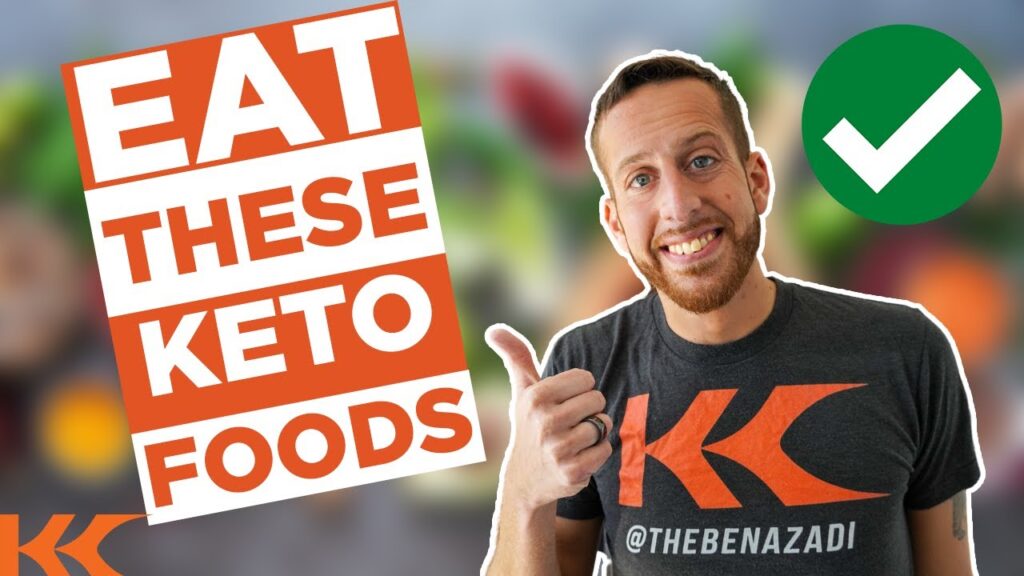
What are the foods that you could eat on the keto diet? It turns out, there’s a list of dirty keto foods that can actually increase inflammation, slow weight loss and even cause weight gain. Fortunately, we also have the list of clean keto foods that help you blast fat, feel good, and skyrocket your keto results. We're gonna to break it all down.
As the best selling author of four books & founder of Keto Kamp where our mission is to educate and to inspire 1 billion people, it is my duty to help you succeed in your health goals.
This is the second article in my ten-part series teaching you how to master keto for results that stick. So if you missed the first part, where we talked about how keto works at the cellular level, we talked about the history of keto and why keto is not a diet but a metabolic process, and so much more. (Here is a link to the first article) I do recommend you go through it because it lays out the framework for keto.
Here, we’re going to talk about the clean keto foods versus the dirty keto foods. Be sure to use this list of healthy keto foods, healthy keto sweeteners and the best way to cook those foods when you head to the grocery store in order to maximize your results
First, let’s talk about the best and healthiest ways to cook those foods. The best way to cook the foods is also the least way to cook the foods. In other words, we don't want to overdo it. We don't want to overcook our food. So the less you can cook food, the better it's going to be for you because you're going to mitigate against nutrients being lost. Some of the best styles of keto food preparation include, raw, lightly steamed, poached, simmered, boiled, lightly grilled but not charred, sous vide, slow cooking and pressure cooking.
Now, the worst way to cook your keto foods is to over cook your keto foods and you're going to do it with over boiling, barbecuing, burning the meat, blackening the meat, charring the meat, deep frying and microwaving. When you do that, you’re pretty much going to be left with dead carcass. When you eat burned keto meats it's going to create something called advanced glycation end products, which is going to actually age you faster, create more inflammation, and put a stop to your keto results. So let's stay away from these bad methods and stick with the good methods.
Now that we understand how to cook the foods. Let's talk about these dirty keto foods, the following foods that I'm going to present to you here if you have any of these keto friendly foods in your kitchen, in your cupboard for yourself for your kids, it's time to do an audit and remove them.
They're going to create massive amounts of inflammation, weight gain and weight loss resistance and lead to a lot of other symptoms. Yes, keep in mind, they're all keto friendly, yet they are not going to get you the right keto results that we want here.
So the worst offenders of them all are going to be the toxic eight, which are these vegetable oils that are everywhere. As I share each one of these eight oils, I want you to consider this, I interviewed Professor Brian Peskin, who's an MIT researcher. He was on the Keto camp podcast and we were talking about these nasty vegetable oils that a lot of people on keto are eating, and I asked him “Professor Peskin, what is worse for you, eating these cooked vegetable oils every single day on keto or smoking a cigarette every single day?” After looking at the research and he shared that a person who smokes two packs of cigarettes every single day for up to 28 years, their chances of developing lung cancer within those 28 years is about 16%. Then we compare that to somebody who had cooked vegetable oils every single day for about 28 years, their chances of developing cancer or heart disease was 86% Yikes!
Listen, I'm not advocating cigarette smoking, but I am saying we got to be really aware of these toxic eight vegetable oils because they're all keto friendly. They might get you in ketosis, but they're not going to get you the results you want. And here at keto camp, we focus on health at the cellular level.
So take note, these are the ones I want you to look out for in your keto bars, your keto foods, and when you go to restaurants and the grocery store. Canola oil, corn oil, cottonseed oil, soybean oil, safflower oil, sunflower oil, peanut oil, and grapeseed oil.
Those are the toxic eight right there, do an audit and remove them right away because here's the deal. Your body cannot use these toxic fats for energy they actually get stuck on your cell membrane’s receptor sites. Previously, I shared with you exactly how hormones and nutrients communicate with these receptor sites on your cells. But when you have inflammation, your fat burning hormones cannot deliver the message, causing weight gain, weight loss resistance and other symptoms to occur. Well, these oils create more inflammation than any other food in our diet, even more than sugar!
A study showed that cell membrane inflammation from these rancid fats, that your body cannot use for energy, can last up to 132 days! That is not good for your body. At least your body can burn sugar, unfortunately, it cannot burn these toxic fats. So I encourage you and I hope this inspires you to remove and/or avoid these fats.
Now that you understand more about the fats to avoid and these dirty keto foods, let's talk about the healthy clean keto foods. Save this information, take it to your grocery store, make the majority of your meals consist of this and you're going to get fat loss, you’re going to feel energetic and you're going to reduce inflammation and feel like a Keto Rockstar.
I love coconuts and coconut oil, avocados, avocado oil, pastured egg yolks are fantastic, they’re like Mother Nature's multivitamin, grass fed butter, grass fed ghee - delicious, which I actually put in my coffee. I have a video by the way, on the world's healthiest keto fatty cup of coffee in which I outlined the exact recipe (here is a link). I also love cacao butter, MCT oils, brain octane oil from bulletproof, I love extra virgin real olive oil, like my friends over at the fresh pressed olive oil club. They have the best olive oil I've ever tried.
Here’s a link for a special offer to get a $39 bottle of olive oil for just a $1
What about seeds and nuts and legumes on a keto diet? My favorite ones are going to be pecans, macadamia nuts, pili nuts, walnuts, sunflower seeds are fantastic, almonds in moderation are great and pine nuts.
What about the proteins? Well, here's my list of my favorite keto proteins. wild caught fish like trout, salmon, sardines and flounder - excellent, just make sure it's wild over farmed. Grass fed and grass finished beef or lamb, delicious, so good for your cells. Remember, don't overcook them. Also, colostrum collagen protein, bone broth if you can get a high quality bone broth like my friends over at Kettle & Fire, they make one of the best bone broth I've ever tried.
If you want to get their bone broth for 15% off, go to kettleandfire.com/ketokamp and use ketokamp at checkout for 15% off.
Bone broth is a great way to get some collagen and these specific amino acids that help line the gut and help you assimilate your keto fats even better. I also love pastured duck, pastured geese, hemp protein, and marine collagen. These are all fantastic, healthy keto approved foods.
It's also important to know which keto sweeteners are good for you and which keto sweeteners are going to actually be bad for you. So here is the list of my favorite keto sweeteners. I love erythritol, pure stevia, monkfruit and non GMO dextrose. Those are fine just make sure it's not leading to more cravings for sugar and carbs and you should be okay.
Now my least favorite keto sweeteners, which by the way are found in a lot of keto bars & protein shakes, require us to look at the ingredients. Here's a list of my non approved keto sweeteners. Xylitol, Maltitol, mannitol, sorbitol, asesullfame potassium, sucralose, aspartame, and saccharine. These sweeteners, yes, they're keto friendly, but they're actually going to create gut dysbiosis which might lead to more inflammation and you not being able to assimilate all the healthy fats you're having on keto, not good.
I've seen a lot of people who are not getting results on keto. When I asked them if they're consuming any of these ingredients, they do an audit, they find out they are, they remove it, boom, they break through a Keto plateau. So you're starting off now and you're going to understand this right from the start. You're going to be ahead of the Keto curve.
What about beverages? Well, my favorite keto beverages starts with Zevia as a great alternative to soda and diet soda. Zevia is a carbonated flavored soda but it's sweetened with stevia. You can find Zevia just about anywhere. Here’s a link for the one on Amazon. And of course, I like high quality water, organic shade grown coffee, and tea. Those are all great keto approved beverages for you.
Lastly, I'm going to share with you a principle, a rule if you will, that if you follow this 2,2,2,2 rule, it's going to help your body start utilizing your fat stores for fuel and help you become a fat burner instead of being a sugar burner.
So here's the 2,2,2,2 rule, which was developed by my mentor, Dr. Pompa. Starting out right now we want to make sure we're consuming two tablespoons of avocado oil or olive oil, two tablespoons of MCT oil or coconut oil, two tablespoons of grass fed butter or grass fed ghee, and finally, two teaspoons of sea salt.
Now the question I get asked all the time is, “do you consume this all in one sitting? It sounds like a lot of fat!” The answer is of course, no, It’s not all in one sitting. The goal is to consume it throughout the day. Think about the oils you're using to cook, with your salad dressings, your dips, that's all included. You want to consume that throughout the entire day. That's going to help start teaching your body to start utilizing fat and transitioning to burning fat instead of sugar, effortlessly. This 2,2,2,2 rule will make all the difference for your energy levels and your fat loss.
I have a question for you. What was your favorite keto food that I mentioned, was it the wild caught fish, the beef, the butter, the coconut oil, which is your favorite keto food - I want to know what your favorite keto food is. Drop a comment down below in the comment section to let me know.
You may be thinking, why did I include the sea salt in that 2,2,2,2 rule? Well, it is crucial to replenish your electrolytes on the ketogenic diet, especially since day one because it's going to help prevent things like the Keto flu. You might have heard all about the dreaded keto flu. Well guess what? In the next article in this series, I'm going to break down how to prevent the Keto flu how to replenish your electrolytes so you don't get brain fog. You don't feel like crap, but instead you feel like a Keto Rockstar.
If you'd like to watch the video version of this article, click the link below.
Are you curious about how the Ketogenic diet actually works? What are the real pros and cons?
I’m going to break down the principles of the Ketogenic diet, how to do it the right way, how to do it the wrong way and so much more. As the best selling author of 3 books and founder of Keto Kamp where our mission is to educate and to inspire inspire 1 billion people to lead a healthier & more vibrant lifestyle, I'm excited to share the truth about Keto with you.
It's not a diet, its a process!
First and foremost, Keto is not a diet, keto is a metabolic process and it has been since humanity arrived on the scene. Thats rights, every one of our ancestors' fundamental metabolic process was - ketosis. They didn’t have the luxury of getting on their phones and having the Uber eats driver at their door step 30 minutes later. They were naturally forced into ketosis by their environment so it makes sense that our bodies are hardwired this way.
When you ask your friends or 'Dr. Google' and they'll say it’s just a fad or trend - well, considering that it’s been around for 2.5 million years - it's not likely going away anytime soon.
Keto is not about eating a bunch of fat - it’s about going low carb enough to teach your body and your cells to choose to burn fat and produce ketones.
When in Rome...
History reminds us, that when Romans encountered people who had seizures - they assumed it was demonic possession. So they would take those individuals and put them in solitary confinement without food or water. Unbeknownst to the romans, they were inadvertently forcing the seized individuals into ketosis which research has shown to help with seizures.
The famed philosopher, Pythagoras would systematically require his students to fast for 40 days before they could enter his course - they would achieve ketosis and a peak mental state, finally ready to learn.
In the 1920s researchers recommended a ketogenic lifestyle for children with epilepsy! This along with new emerging research confirms that it has been around and will continue to be because it is a part of our being.
If at first you don't succeed, do it the right way.
The media likes to bash Keto by using bad examples - in which case they’re right, because they're bad examples - that’s when you do it the wrong way - but we’re focused on doing things the right way.
So let me clarify that Ketoacidosis is not the same as ketosis.
Ketoacidosis is a very serious event with significantly high level of ketones, beta hydroxy butyrate over 15, in the blood stream - which could in fact be deadly; however, it is only a cause for concern if you’re type 1 diabetic, which if you're not, then you’ll fall into ketosis looking & feeling great!
Master Physician
Our human bodies are designed to be the number one greatest healer, our personal and personalized internal physician. You are a miracle, a master piece because you are a piece of the Master. Once you understand how it works on the cellular level, with your DNA, with your hormones - and you do it the right way, how I'm going to show you, you're going to achieve extraordinary results.
Let's go back to biology 101 to find out how Keto works on a cellular level. We're a 70 trillion cell masterpiece and within each and every cell there is a DNA nucleus. Although we cannot change the genes we're born with, the goal is not to change them but to change the expression of those genes. So inside the nucleus you have the mitochondria which uses ATP (adenosine triphosphate) as its gasoline, as well as a lipid bilayer made of protein saturated fat and cholesterol.
That’s right! Every single one of your 70 trillion cells are made up of fat, they love & need fat. In fact, less than 1% of you body is made up of carbohydrates. Which is why the Ketogenic process is so powerful for your health - you’re literally giving your body and cells the building blocks they need to begin burning fat in order to produce energy and to feel good.
Every cell membrane is fitted with receptor sites, integral membrane proteins which are the center of communication, the orchestra for the symphony that is the human body. These cell receptor sites process hormones, nutrients and oxygen. There are roughly 600 known hormones utilized for fat burning, fat storage, longevity, feel good hormones etc. They're the language of the human body, the chemical messengers, sending signals to the receptor sites as instructions for their respective duties. Thats the way you were designed, you are MAGNIFICENT!
Communication is Key
Heres the problem, if you're consuming tons of carbohydrates, not doing keto or even doing keto the wrong way then you are creating cellular membrane inflammation. When you create cellular membrane inflammation the hormones are still sending signals, but the receptor sites blunted or blocked. It's as if you were yelling in my face point blank but I cannot hear the message, which means you can be taking the best supplements in the world but their effectiveness is greatly diminished.
Each of the 70 trillion cells can only choose one of two sources for fuel - sugar in the form of glucose or fat to produce ketones - that's it! When your cells use sugar as their source for fuel, the exchange produces cellular smoke, similar to a truck on the highway, which is not good for the environment, it is not good for your cell's environment either. When you apply the principles I'm about to teach you for doing keto properly, burning fat for fuel to produce ketones, its comparable to a Tesla cruising cleanly down the street.
The Root of the Problem
When you start reducing cellular inflammation, you'll suddenly start seeing a difference in symptoms like skin issues, diabetes, fatigue, energy levels, weight loss resistance, insulin resistance and so on. Which brings me to my next point: the symptom is not the problem.
If you're overweight right now, I understand. I weighed 80 pounds more than I do right now, I was obese most of my life. I didn't have a weight problem - no one in the history of the world has had a weight problem - it is a weight symptom - being overweight is a symptom of an underlying problem. A crucial point Dr. Berg makes all the time, we don’t lose weight to get healthy, we get healthy to lose weight. How do we get healthy? We do clean Keto, we teach our cells to reduce inflammation and as a side effect we lose weight, we have more energy and live a long healthy vibrant life! So this is how keto works on the cellular level, I hope this makes sense to you.
Brain Fuel
Keto is a very powerful way to teach your cells how to communicate the right way. Did you know babies are continuously in and out of ketosis? Breastmilk is made up of saturated fat, protein and cholesterol, which actually helps in the development of the brain which is 80% fat & cholesterol and even though it is only 2% of our body weight it absorbs 20% of our energy needs! So make sure you’re fueling your brain with the right nutrients - protein, fat and cholesterol.
When you’re in the great land of Ketosis, it is like a superpower. I’m fortunately beyond the weight-loss phase since I went through my transformation, but I continue reaping the rewards and benefits, feeling magnificent, mentally sharp, brain fog - gone, increased capacity to handle stress and the list goes on.
Burning fat is our birth right.
Remember, the caveat is that Keto needs to be done the right way. Keep this in mind when you go on Dr. Google and get 100 million results when searching for keto, you’re looking for the right way to do it. Most results will teach you how to do it wrong, dirty keto, a state of ketosis which can increase inflammation and have you not feeling good. So I want to teach you the dirty keto vs clean keto principles, I want to give you a grocery list and outline it all for you. Get the Keto Blueprint Guide for shopping, 100% free. It includes comprehensive aisle-by-aisle keto diet shopping list, the best fat burning nutrients anyone can find and a complete grocery guide of approved fats, protein and carbohydrates.
For a video explanation, watch the video below.


